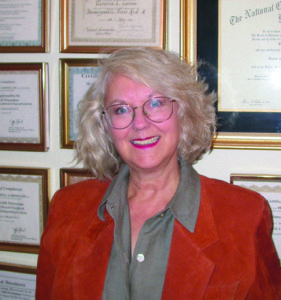
Unless you are living in outer space eating entirely chemical food, you no doubt realize that food does not come from grocery stores. Food comes from your beautiful green Earth. Every ounce of food in any grocery store has traveled there using petroleum to get there! The average distance your food has traveled is between 1,200 and 1,500 miles. That’s a lot of gas usage. And doesn’t include the rest of it–like processing, packaging, and refrigeration.
It doesn’t have to be that way if you only use food from your hundred mile radius. Or better yet, grow your own food in your own backyard, at least some of it. Or forage in your own yard if you are not using cancer-causing chemicals (glyphosphate, otherwise known as Round-Up). Or learn to do without some things. There ARE NO strawberries growing in our area at this time of the year. Soon, though.
In fact, a hundred or so years ago there were NO grocery stores as we know them. They were mostly called general stores, for you could get cloth, thread, and tools as well as staples such as flour and coffee and tea. But some of the general stores were few and far between so most everyone outside of the cities grew most, if not all, of what they ate. Of course they didn’t eat packaged foods in those days. Our ancestors had a real sense of what grew on their own land, when in was in season, what keeps through the Winter, and how to preserve those foods.
Among rural people were many farms providing food for rather large families. Most had a large garden, a cow, some chickens, an orchard. I’ve now, in my brief lifetime, lived in two places that have had a free-standing fruit room–one a hundred acre farm outside of Eugene, the other where I live now. A “fruit room” is a thick-walled building which allows cool air in with just a small screen (about 4″) to allow for an exchange of air. Sometimes they were root cellars or rooms in the back of a house. This was in the era before refrigeration was everywhere. Most food was kept in these cool rooms and not mechanically refrigerated like today.
Root crops such as beets, garlic, onions, and potatoes were kept there as well as home-canned goods and some orchard fruits. Even eggs and milk may have been stored there if there was no spring house on the land. Where else would you put these things? A cooler perhaps? Think emergency. What will you do if disaster strikes?
Our grandparents also knew from those who came before them, what wild greens to look for in the Spring and which mushrooms were safe to eat. Few of us know this information any more, though there are still foods out there to be foraged, if you care to learn them. It takes years so start now.
By March, fruits and produce in the fruit rooms were drying up, literally. Not only had most of the home-grown and canned foods been used up by then, but even the flour and coffee from the general stores were about gone. We would then be approaching “the bottom of the barrel” by March. This was known as “the hunger month” as new crops had yet to be planted and harvested. Hence the reliance on neighbors and learning to forage for food. No Cheatos for out ancestors.
As we wait for Spring vegetables to come into season, perhaps it’s time to try some of those greens, known nowadays as weeds, while we wait for asparagus, greens, and eggs to come fully into season. If you are lucky enough to have these foods in your backyard, you are truly lucky. You can have beautiful, nourishing meals by using up the root veggies in your fruit room and learning to forage in your own or your neighbors’ yards. With permission, of course.
But don’t do this at home if you are using cancer-causing Round-Up chemicals in your yard. Do NOT forage near railroad tracks or golf courses. There are deadly chemical in the soils there. Also some farms where DDT (now outlawed) was used in the 1950s. But if you have a chemical-free lawn, or back 40, it’s time to learn about foraging. I once asked a midwife I worked with if I could pick the chickweed in her garden. She was astonished as I picked two black garbage bags full of chickweed. I have chickens so I never have chickweed growing on my property. It’s named “chickweed” for a reason!
Near med school, there was a small local restaurant we went to almost daily. In fact, my best friend and I would go for both first lunch and second lunch. In a terraced garden next to the restaurant Miner’s lettuce grew. It tends to grow through our mild Winters, and it is very distinctive, extremely nutritious, and more delicious than spinach. I would take a bag and some scissors and cut enough every day for the nightly dinner salad. Even my fellow Naturopathic medical students thought I was a bit weird. But I had spent years in advance herb classes taught by the woman instrumental in starting the National Herbalist Guild.
A lot of people are now trying to get off the industrial food train–not buying foods that are overly packaged or with ingredients that are unpronounceable, reading labels, buying more local produce. Only about one quarter of American households have food-producing gardens. To keep our Earth green there needs to be more local orientation. It’s the beginning of the Emerald Season. Soon we will be inundated with greens from the Earth. Maybe even your own patch of earth. Enjoy it all.
No Comments
Leave a comment Cancel